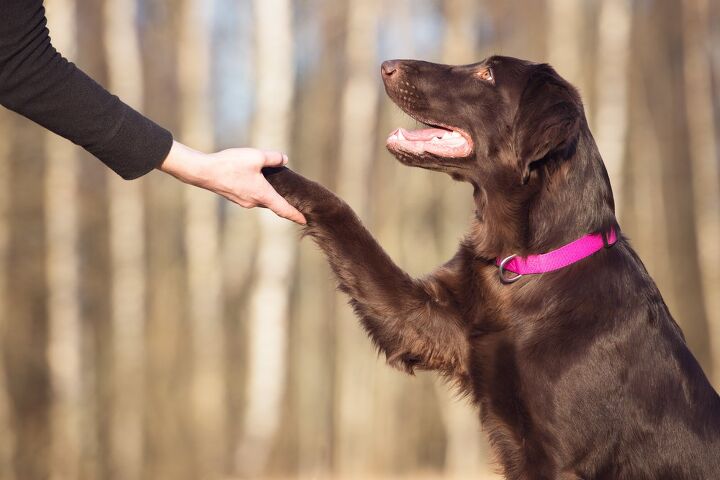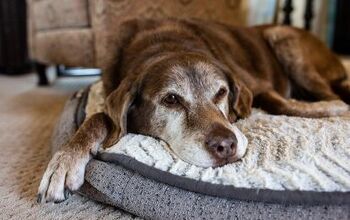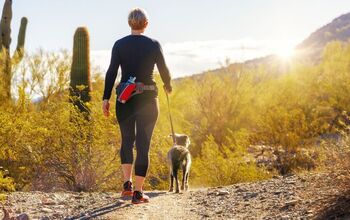When You Should Start Training Your Rescue Dog

Congrats on your new family member! Once your rescue dog is settled in, how soon can you start training him?
So, you’ve just picked up your new family member from the local shelter and you’ve noticed he’s got a few behavioral issues. If you’re concerned that your nervous little pooch may need time to decompress before you start introducing rules and regulations, you’re both right and wrong.
Dogs need clearly established boundaries and expectations from the onset. It helps them feel secure, connect with you, and begin learning those all-important ropes when it comes to earning treats. But before you try to train your new buddy, take time to bond and gauge your pet’s comfort level as you move forward. Past triggers can surface and anything from a loud voice to his perception of being scolded can work against you.
The 3-3-3 Rule to Welcoming your Dog
Plan to spend the first few weeks and even the first few months getting to know and build trust with your new dog. A 3-3-3 rule talks to some of the general timelines you can expect to experience as your dog settles into this new home environment.
For the first 3 days, he’s likely to feel overwhelmed, hesitant to eat or drink and may be more content to curl up and hide away in his crate than explore his new surroundings. After 3 weeks, he’ll start to settle in, feel relaxed and comfortable in his routine and start to show a hint of his true personality. By the 3-month mark, your rescue dog will have built trust and be bonding with you in his new home environment.
During this time, socializing with any other pets in your home will be important and may take time and supervision. Similarly, leash-free parks will allow your pooch to gradually meet new dogs, but you should plan to keep a pocket full of high-value treats in case you need to coax him back on those initial excursions. And if he becomes aggressive or fearful, plan to leash him and bring him home for the time being.
While you won’t be moving into the training phase just yet, it’s important to curb certain behaviors from the onset such as relieving himself on your floors, chewing or clawing furnishings and chasing the cat or other small pets. This can be done by modifying his environment and routine. Take him out for frequent potty breaks and reward him when he delivers.
Crate or confine him to a smaller space such as a kitchen or mud room if leaving him to wander the house has proven to be a problem. If he chews, remove the item and replace it with a chew toy. And toss him a little treat when you see him opting for the toy versus the shoe or furnishings.
Get him into a routine when it comes to feeding and walks. Predictability helps built trust and lets your pet know that he can count on you to provide food when he’s hungry and to take him out when he needs to stretch his legs and relieve himself.
And provide him with his own “stuff”. Food and water bowls, blankets and toys, and a crate or bed that will act as a safe space he can retreat to when feeling overwhelmed.
Take this extra time to learn your dog’s hot buttons including those that may cause him to act out in fear or aggression. Does he guard his food, distrust men or children, or become stressed around other dogs? Take the steps necessary to reassure him that he’s now in a safe place and that you’ve got his back.
Let’s Get Training
So, he’s settling into his new home and routine nicely which means it’s time to start introducing a few more structured requests. This should include the basic commands including Sit, Stay, Leave It, Down, Heel as well as Recall. These will not only ensure your dog responds quickly when company arrives or you need him to stop chewing your shoes but also when you need him to immediately stop and sit when you see him wandering into potentially dangerous situations such as traffic.
Plan to use rewards-based training that will encourage new, positive behaviors and (no surprise, here) food and treats will be infinitely more motivating than simple encouragement and head pats.
And when training a rescue dog, conduct lessons indoors without potential distractions such as noise and other animals that can slow down the process. When you want to practice recall, do so in a fenced yard until you know for certain that he’ll return on command.
1. Name Recognition
For him to be receptive to learning new commands, you’re going to need his undivided attention. And this starts with getting your dog to respond to his name by either looking your way or coming to you. To begin, call his name and reward him with a treat whether he intentionally looks your way or just happens to glance over. The goal is for him to associate his name and him looking your way, with a reward. Wait a few minutes, allow him to become preoccupied with something else, then call his name again and repeat with a treat when he responds. Practice this step several times throughout the day.
For older dogs who may be losing their hearing, clicker training is a great way to capture their attention. The sharp, unique click sound is easily recognizable and when he looks your way and a treat is issued, it’s a sound he’ll soon start to listen for. And it’s easy to train. Simply call his name and hold the treat close to your face. Each time he looks at you, click the clicker and give him his reward. Gradually increase the time between him looking up at you and you providing a treat.
2. Respond to Commands
If you’re now able to gain your dog’s undivided attention on command, it’s time to start introducing the basics. Start by calling his name to draw him over to you. Issue his earned treat, then proceed to the training.
Sit, is often a command even rescue dogs will revert to when a treat is held above their head. Your goal is to have him build a strong connection between this command and receiving a reward. So, regardless of whether you’re holding something tasty right in front of him or you’re across the field of a leash-free park, he sits without hesitation when he hears you issue the command.
With the Stay command, The American Kennel Club emphasizes the need for a start and a finish to help your dog understand when it’s okay for him to get up and move. So, choose a word that you both understand will release him from the Stay position and will be used exclusively for the release purpose. And avoid opting for something that he already hears frequently or in other situations – including his name, Come, or Treat - because it will confuse him when he hears it in a different context.
Lay down is simply luring your dog down from a Sit position. Once seated, slowly move the treat from in front of his face to between his front paws. Your dog’s body will follow and he’ll enjoy a tasty reward for his work. As with the other commands, repeat throughout the day until upon hearing the word, your dog responds with the appropriate action.
Again, your first step in training a rescue dog will be in gaining his trust and building a bond that will have him eager and ready to respond to commands to earn his reward. This can take days, weeks, and months to achieve and in these instances, patience really is a virtue.

Sharing space with three seriously judgy Schnoodles and a feline who prefers to be left alone. #LivingMyBestLife
More by Mary Simpson























